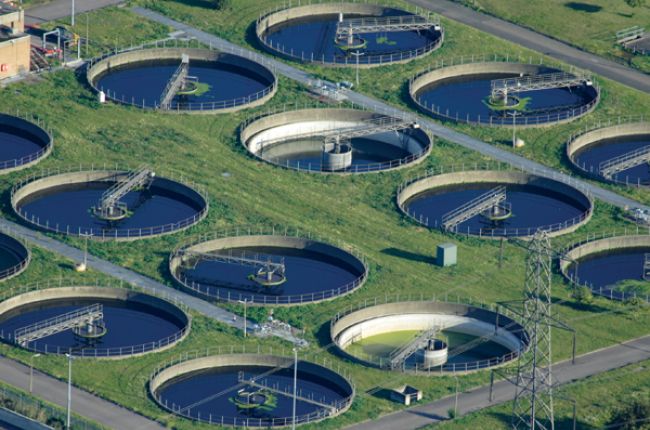Effective Waste Water Treatment Solutions: Secret Techniques and Benefits
Effective Waste Water Treatment Solutions: Secret Techniques and Benefits
Blog Article
Strategic Approaches to Improve Drainage Treatment Performance and Reduce Environmental Effect
In the world of drainage treatment, the quest for improved performance and lowered environmental impact is a perpetual obstacle that requires strategic services. As culture grapples with the critical to manage water sources sustainably, a nuanced approach comes to be necessary. The combination of innovative treatment innovations, energy-efficient procedures, source recuperation approaches, boosted nutrient elimination strategies, and clever surveillance and control systems stands for a complex framework for dealing with these pressing issues. Nonetheless, what lies at the core of this facility web of strategies is the potential to change the means we come close to waste water treatment, not simply as a procedure of disposal, however as a useful chance for development and environmental stewardship.
Advanced Treatment Technologies
Sophisticated membrane filtration systems have transformed sophisticated wastewater therapy procedures, significantly improving the elimination of impurities. This technology has verified to be extremely effective in getting rid of a vast array of contaminants, including pharmaceuticals, heavy metals, and organic compounds, which are frequently challenging to get rid of with standard therapy approaches.
In addition, membrane layer purification systems offer many benefits over standard treatment methods. They need much less room, generate higher-quality effluent, and are extra resistant to variations in influent water high quality. Furthermore, these systems are extremely versatile and can be conveniently incorporated into existing treatment plants or made use of as standalone devices for decentralized applications. As the need for clean water remains to rise, the adoption of innovative membrane layer filtering modern technologies is important to ensure lasting and efficient wastewater treatment techniques.
Energy-Efficient Processes
The integration of energy-efficient processes in wastewater therapy systems is vital for enhancing resource usage and decreasing operational expenses. By executing energy-efficient technologies, treatment plants can considerably decrease their carbon impact and general environmental influence. One crucial approach to boosting power efficiency in wastewater therapy is the usage of innovative aeration systems, such as fine bubble diffusers or surface area aerators, which can enhance oxygen transfer performance and lower energy intake. Additionally, including energy recuperation systems, like anaerobic digestion for biogas manufacturing or using excess heat for thermal procedures, can help balance out power requirements and promote sustainability.
Furthermore, optimizing process control and automation with making use of sophisticated sensing units and checking systems can boost total power performance by readjusting procedures in real-time based upon real need and conditions. Carrying out power audits and consistently monitoring energy performance indications are important practices to determine areas for enhancement and track energy-saving initiatives efficiently. Generally, the fostering of energy-efficient procedures in wastewater therapy not just profits the atmosphere but also contributes to long-term expense financial savings and functional sustainability.
Source Healing Approaches
With an emphasis on optimizing resource usage and sustainability in wastewater treatment systems, the application of source recuperation strategies becomes a critical element in boosting operational efficiency. Resource healing methods in wastewater therapy entail the identification and removal of valuable resources from the waste stream, consequently transforming what was once taken into consideration waste into an important possession. By carrying out resource recuperation techniques such as nutrient elimination and recovery, power generation from raw material, and the production of multiple-use water, wastewater treatment plants can lessen ecological influence while maximizing performance.

Improved Nutrient Removal Techniques
Implementing advanced nutrient elimination strategies is crucial for maximizing the effectiveness of wastewater treatment systems. Enhanced nutrient elimination plays a critical function in reducing the environmental influence of treated effluent discharged right her response into water bodies. One of the key techniques made use of for improved nutrient removal is the procedure of organic nutrient elimination (BNR), which involves the elimination of nitrogen and phosphorus with biological procedures. This can be accomplished with the use of specialized microorganisms that can transform nitrogen compounds into inert nitrogen gas via denitrification, and collect phosphorus within their cells with a process called boosted biological phosphorus removal (EBPR)

In addition to BNR, advanced treatment techniques such as membrane layer bioreactors (MBRs) and created marshes can additionally be employed to improve nutrient elimination performance. By including these sophisticated nutrient elimination methods right into wastewater treatment communities, sectors and systems can effectively decrease nutrient air pollution and protect the environment.
Smart Monitoring and Control Systems
Utilizing innovative modern technology, the integration of smart tracking and control systems changes the functional effectiveness of wastewater treatment facilities. These systems include sophisticated sensors and information analytics to continually keep an eye on crucial specifications such as pH levels, turbidity, liquified oxygen, and circulation rates in real-time. By gathering and evaluating this information, drivers can get important insights right into the efficiency of the therapy procedures, allowing aggressive changes to enhance therapy efficiency.
Smart surveillance and control systems likewise sustain remote tracking capacities, enabling drivers to accessibility real-time data and control features from off-site areas. This remote article availability boosts functional versatility and responsiveness, making it possible for swift treatments in case of system malfunctions or variations in influent quality. The anticipating upkeep capabilities of these systems assist protect against equipment failures and lessen downtime, inevitably improving the general integrity of wastewater therapy operations.
Final Thought
In verdict, strategic techniques such as innovative treatment innovations, energy-efficient procedures, source recovery techniques, boosted nutrient elimination techniques, and wise surveillance and control systems play an important duty in enhancing wastewater treatment effectiveness and lessening ecological effect. By carrying out these techniques, wastewater treatment plants can boost their overall performance, minimize power intake, recover useful sources, and guarantee conformity with environmental laws. These strategies are necessary for lasting and effective wastewater management methods.

In verdict, tactical strategies such as sophisticated therapy technologies, energy-efficient procedures, resource healing approaches, improved nutrient removal methods, and clever monitoring and control systems play an essential duty in enhancing wastewater therapy efficiency and decreasing environmental effect.
Report this page